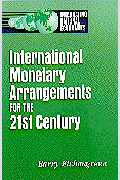Studies in this week’s Hutchins Roundup find that China’s economic growth likely to slow in the next decade, central banks have limited policy space to fight the next recession and more.
Want to receive the Hutchins Roundup as an email? Sign up here to get it in your inbox every Thursday.
Analyzing Chinese productivity in 38 industrial sectors and 11 service sectors, Min Zhu, Longmei Zhang, and Daoju Peng of the International Monetary Fund find that industrial productivity has reached 35 percent of the U.S. level and service sector productivity 25 percent, suggesting continued room for catch-up growth. But a shift from high-productivity manufacturing to lower-productivity services will depress aggregate productivity growth in the years ahead, putting significant downward pressure on growth in the coming decade, they say. The researchers estimate that China’s annual growth—last reported at 6 percent—could slow to 5 percent by 2025 and 4 percent by 2030. Reforming industrial state-owned enterprises and lifting regulations and entry barriers in the service sector could boost potential growth, they argue. If both reforms are implemented, potential GDP growth could rise to 5.5 percent.
Central banks have limited policy space to fight the next recession
Joseph Gagnon and Christopher Collins of the Peterson Institute for International Economics consider whether central banks have the tools necessary to fight the next recession. The authors find that, by using a combination of negative interest rates, forward guidance, and quantitative easing, the Federal Reserve can ease financial conditions by the equivalent of about a 5 percentage point cut in the federal funds rate; enough to fight a mild recession but not a severe one. Because rates in the Euro area are already below zero and Japan’s rates are at zero, the policy space using tools used to date is much lower, equivalent to only about a 1 percentage point cut in short-term rates. But unlike the U.S., the Euro area and Japan have the option to buy corporate equity and real estate or make direct transfers to households as a policy tool, which may provide additional ammunition. Gagnon and Collins argue that central banks should consider raising the inflation target before the next recession starts so that such a change could be credible. Higher inflation expectations not only provide more room to cut short rates, they also increase the room for quantitative easing to operate, the authors say. They find that a 1 percentage point increase in long-run inflation expectations is equivalent to about a 2.4 percentage point cut in the short-term policy rate.
Anchored inflation expectations explain the flatter the Phillips curve
According to many economists, the Phillips curve—the negative relationship between the unemployment rate and inflation—has flattened or disappeared over the past decade. In a model of expectations formation, Peter Lihn Jørgensen of the University of California, Berkeley, and Kevin Lansing of the Federal Reserve Bank of San Francisco show that the hawkish monetary policy response to high inflation in the early 1980s should have led household inflation expectations to become increasingly insensitive to economic conditions. This anchoring of expectations explains why inflation was higher than expected during the Great Recession and lower than expected during the subsequent recovery. Indeed, after accounting for the trends in expectations, the Phillips curve appears stable from 1960 to 2019, they say.
Chart of the week: German households continue to out-save others
 Source: Wall Street Journal
Source: Wall Street Journal
“The macroeconomic landscape has been marked by the Great Financial Crisis and the sovereign debt crisis, and more recently by a low inflation environment. At the same time, new challenges have emerged such as demographics, disruptive technology and climate change. Conventional wisdom has been challenged and monetary policy globally has explored unchartered territories. This calls for us to review our strategy and to consider how our monetary policy can best deliver on our mandate. Indeed, a question that is common to the entire community of central banks today is how to best define the medium-term objective of monetary policy, so as to ensure that expectations are firmly anchored. This could be particularly beneficial in conditions – like today’s – in which the policy space to buffer the economy from adverse developments is more limited than it was prior to the crisis,” says Christine Lagarde, President of the European Central Bank.










Commentary
Hutchins Roundup: China’s growth, monetary policy tools, and more
December 5, 2019